In any lab setting, the highest priority must always be safety. Of course, it’s no secret that lab workers often execute dangerous tasks and handle lethal substances. Therefore, maintaining high precautionary standards is essential to keeping personnel safe at all times. At Cryostar Industries, we have almost twenty years of experience in providing expert equipment services to New York, New Jersey and Connecticut labs. Obviously, we’ve managed to maintain exemplary service and efficiency as two central priorities. However, we’ve also maintained a steadfast commitment to superlative safety measures.
Everyone who enters a lab should know lab safety logistics in and out. And one of the best ways to avoid accident or injury is to understand each lab’s specific safety symbols.
Ensuring each worker’s familiarity with their lab’s safety symbols is critical to daily operations, everyday safety and even cost-efficiency. Volatile chemicals, flammable/combustible materials, hazardous tools and lethal specimens are just a few of the dangerous things that countless labs can be housing at any time.
In this post, we’ll present a comprehensive guide to understanding the most common safety symbols. We break down precisely what they mean, plus how to stay safe and eco-friendly.
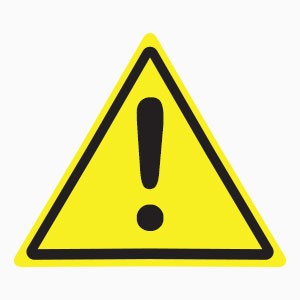
1. General Warning
Of course, this is the most common safety symbol you can find in countless labs around the world. The “General Warning” symbol is essentially a general way to alert any personnel, clients, vendors or visitors of potential hazards in the area. Usually, you can spot these on doors, walls, cupboards and above doorways.
Whenever you see this symbol, consider it a reminder to proceed cautiously and conscientiously. Maintain vigilance, remain observant to your surroundings and respect the potential danger of the room as well as everyone’s safety.
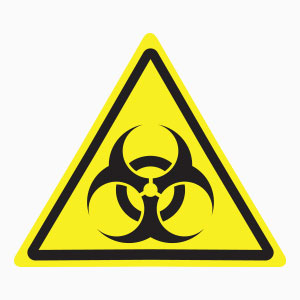
2. Biohazard
The “Biohazard” sign is an indication that the lab and instruments within have had contact with biohazard specimens. Therefore, there’s a risk of contamination. Lab biosafety levels will also be in place to indicate the level of risk associated with the lab.
Make sure you’re always wearing the right personal protective equipment (PPE). Depending on the biosafety level, this can mean gloves, goggles, or even a full protective suit. Always be sure to clean, disinfect and decontaminate the instruments. Also, make sure there are specific rules in place to prevent contamination and keep workers safe.
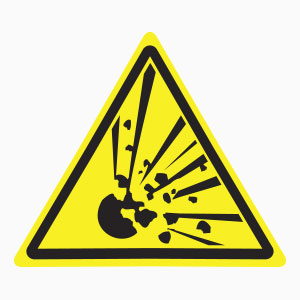
3. Explosive Materials
Obviously, every lab symbol should never be taken lightly. However, should you ever spot this one, consider it of unique seriousness. The Explosive Materials sign indicates that there are chemicals or other agents with explosive properties present within the lab. In addition, this may include dangerous chemical reactions from unstable explosives or combustibles.
Each and every lab worker should memorize the respective safety protocol. Calibrate your equipment as often as possible. Additionally, be sure to implement stringent policies with specific reference to fire and explosion safety. Incorporate mandatory, routine storage verification – keeping everyone accountable for storing all chemicals safely and securely.
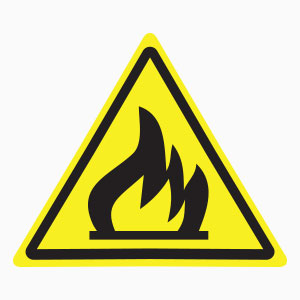
4. Flammable Materials
You can find this sign in many labs around the country. When a lab adheres this symbol to their door or walls, it means they’re regularly handling flammable materials.
Be sure that employees store each substance in a location with stable temperatures under constant control. In addition, check that each one has correct, legible labels. Common flammable materials in lab workspaces are solvents or even cleaning materials with harsher or more abrasive ingredients. Keep all of these substances away from extreme heat, open flame or any other agent that may cause them to ignite.
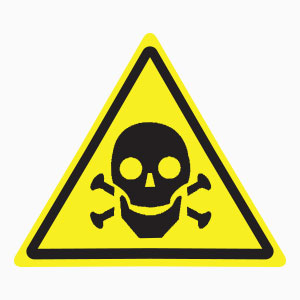
5. Toxic Materials
In addition to labs, you can find this in most garages or workshops around the country. Whenever you see this symbol, it means that nearby you’ll find toxic, lethal substances. They can harm you if ingested, inhaled, or even if they make direct contact with skin.
Each agent’s toxicity varies depending on what it is. Also, it depends on precisely where it makes contact and its concentration. Naturally, you should always have the appropriate gear within reach when handling these substances. Whether it’s gloves, goggles or respirators, staff should always have the necessary PPE and have safety protocol memorized.
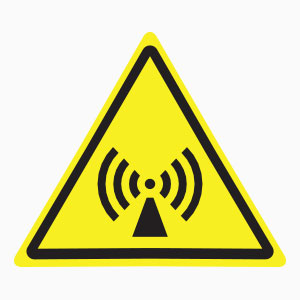
6. Non-Ionizing Radiation
Whenever you find this symbol on display, it’s an indication that the lab regularly utilizes non-ionizing radiation. Essentially, this includes ultraviolet light, infrared, microwave, and radio frequency.
If any of these apply to your lab, be sure to have all sources properly marked. Biological safety cabinets, PPE and environmental controls can limit exposure.
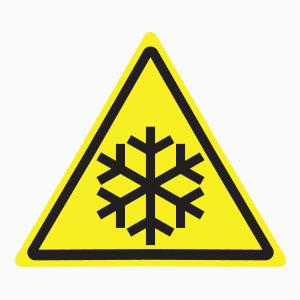
7. Low Temperature
This symbol is a clear indication of extreme low temperatures or cryogenic hazards. Specific equipment, like ultra-low temperature freezers, is well below freezing point. This kind of equipment employs liquid nitrogen to reach their astonishingly low temperatures. Nowadays, with COVID-19 and the long-anticipated vaccination release, critically low-temperatures are present in more labs and clinics than ever before. The COVID-19 vaccination requires extremely low storage temperatures that only ultra-low temperature freezers are capable of. In the event of ULT failure, the vaccines will lose their efficacy and are, essentially, worthless.
When it comes to these agents, personal protective equipment is a must. Wear thick rubber gloves that extend to the elbows, closed-toe footwear, rubber aprons and face shields.
Conclusion
When it comes to lab safety, you can never be too informed or prepared. At Cryostar, each of our services contribute to our clients’ universal efficiency and workplace safety.
These are not 100% of the laboratory safety symbols that govern protocol around the world. However, these are the most essential. Also, they’re the symbols you will most likely come across while working in any scientific environment.

| Call for Immediate Lab Services |
|---|
| Long Island, Nassau & Suffolk County Call: 516-333-4006 |
| The Bronx, Manhattan, Brooklyn, Queens, & Staten Island Call: 718-885-0833 |
| Albany & Southern New York State Call: 800-564-5513 |
| Piscataway, Northern & Central New Jersey Call: 800-564-5513 |
| Danbury Connecticut & Surrounding Areas Call: 203-748-7343 |
24/7 Emergency ServiceCall: 1-800-564-5513 |